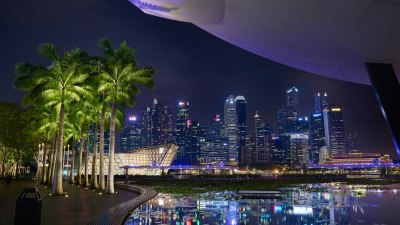The River Here Has No Mouth
Exploring the themes and symbols in 'The River Here Has No Mouth' through literary analysis.

The poem 'The River Here Has No Mouth' by the renowned poet is a profound exploration of emotions, identity, and the relentless passage of time. The imagery employed by the poet evokes a sense of isolation and the struggle to find one's voice in a world that often seems indifferent. As we delve into this literary piece, we shall examine its thematic elements, structure, and the underlying messages that resonate with readers.
The title itself, 'The River Here Has No Mouth,' serves as a powerful metaphor for loss and silence. A river, often a symbol of life and continuity, here is depicted as having no mouth, suggesting a stifling of expression and communication. This theme of voicelessness runs parallel to the experience of individuals who find themselves trapped in their own reality, unable to articulate their thoughts and feelings. The absence of a mouth signifies a lack of agency, reinforcing the idea that sometimes, life flows around us without allowing us to participate fully.
Imagery and Symbols
Imagery plays a critical role in the poem, painting a vivid picture of a landscape marked by desolation. The poet uses natural elements—water, stones, and barren land—to evoke feelings of emptiness and longing. For instance, the river flows silently, devoid of a mouth, which hints at unexpressed emotions and unresolved conflicts. This imagery evokes a sense of yearning; the river, despite its movement, cannot voice the stories it carries. The stones along the bank may symbolize barriers, both physical and emotional, preventing the flow of thoughts and interactions.
Another significant symbol in the poem is the river itself, which can represent time and the continuous cycles of life. Although it flows, it does not reveal its depths, paralleling how individuals may carry deep feelings and experiences without ever vocalizing them. This duality of the river—flowing yet silent—mirrors the complexities of human existence, where individuals often navigate through life without expressing their true selves.
Thematic Elements
Several themes emerge from the poem, including isolation, identity, and the quest for understanding. Isolation is a predominant theme, demonstrated through the imagery of the river having no mouth. The vastness of the landscape amplifies this feeling, suggesting that while one may exist in a bustling world, they can still feel profoundly alone. The poet captures this sentiment by illustrating how the flowing water, a lifeline for many, can also signify a disconnection from others.
Identity is another theme intricately woven throughout the poem. The speaker's struggle to articulate their thoughts mirrors the challenges faced by individuals in understanding their place in society. The river, lacking a mouth, symbolizes the silence many face when confronting their identity in a complex and often unyielding world. The quest for understanding oneself becomes difficult without the ability to express emotions and experiences fully.
Structure and Form
The poem's structure contributes significantly to its overall impact. Utilizing free verse, the poet breaks conventional boundaries, reflecting the themes of disconnection and fragmentation. This form allows the thoughts to flow freely, echoing the idea of a river, while also emphasizing the lack of constraints that might inhibit self-expression. The absence of a fixed rhyme scheme further aligns with the poem's exploration of chaos within experience and emotion.
Coupled with evocative imagery, the structure enhances the poem's emotional weight. The varying lengths of lines and stanzas amplify the disorienting feeling of navigating through thoughts that are often hard to articulate. This lack of uniformity in form reinforces the notion that life is unpredictable and complex, much like the flowing river that has no mouth.
Exploration of Silence
Silence plays a critical role in the narrative arc of the poem. It is both a refuge and a prison—a space where thoughts can either be nurtured or become overwhelming. The poet employs silence as a recurring motif, contrasting the vibrant imagery of the river with the stillness of its lack of voice. This duality captures the tension between the desire to speak and the inability to do so, creating a layered reading experience for the audience.
Through this exploration of silence, the poet conveys the complexities of emotion. The quietness of the river can be interpreted as an invitation to reflect and internalize feelings. However, it also hints at the repercussions of unvoiced thoughts, where silence can lead to confusion and a sense of being lost in one's journey. The poet's use of this motif resonates with readers who may find parallels to their experiences of feeling unheard or misunderstood.
Emotional Resonance
The emotional resonance of 'The River Here Has No Mouth' is profound, as it speaks to the human experience of navigating through silence and isolation. Readers are taken on a journey that reflects both the beauty and tragedy of existence. The imagery employed creates a visceral connection, invoking feelings of empathy and understanding as they relate to their own experiences.
As individuals, we often find ourselves grappling with the weight of our thoughts and feelings. The poem captures this struggle eloquently, allowing readers to engage with their own emotions while contemplating the silences in their lives. It serves as a reminder that, despite the barriers we may face, there exists a universal thread of connection through shared experiences of longing, identity, and expression.
Conclusion
'The River Here Has No Mouth' stands as a poignant reflection on the challenges of self-expression and the complexities of human existence. Through its rich imagery, symbolic depth, and thematic exploration, the poem captures the essence of isolation and the yearning for understanding. The metaphor of the river, continuously flowing yet silent, encapsulates the profound struggle of navigating through life without a voice. It is an invitation to reflect on our experiences and to embrace the power that comes from voicing our truths, ultimately reminding us that even in silence, we are not alone.











